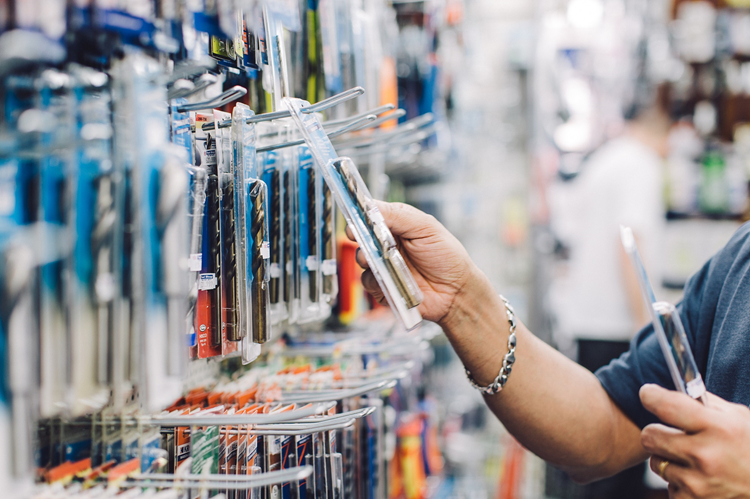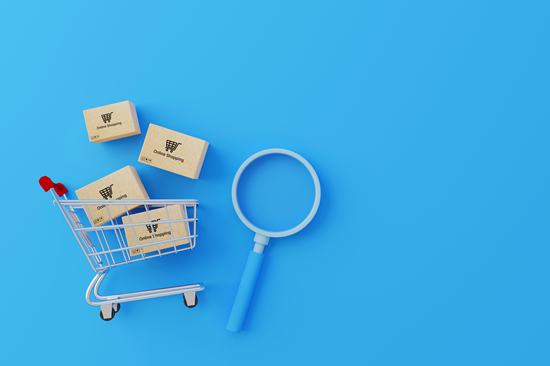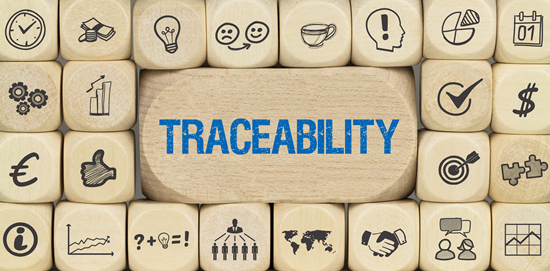From December 2024, guidelines on what can be sold in the EU and Northern Ireland have modernised existing rules in response to the rise of digital commerce. Here’s what you need to know…

The GPSR replaces previous regulations (The General Product Safety Directive 2001 and the Food Imitating Product Directive 1987) to reflect significant changes in online retail and cross-border sales. These new requirements impact a wide range of consumer goods, including those commonly sold in DIY and hardware stores—such as power tools, electrical fittings, hand tools, adhesives, paints, and construction materials.
A key focus of the GPSR is traceability, ensuring that all products meet safety standards and consumers have clear information on product origins and compliance. These changes include:
- A designated EU Responsible Person: Any business selling into the EU or Northern Ireland must have a named contact responsible for product safety compliance.
- Traceable products: Items must have visible and accessible batch numbers or serial numbers—this applies to everything from drills and saws to electrical sockets and fasteners.
- Online compliance: Sellers using platforms such as Amazon, eBay, or their own e-commerce sites must verify that their listings comply with GPSR requirements.
From 13th December 2024, all business sellers listing products for sale (both new and second-hand) in the EU and NI must include:
- The manufacturer’s details, including a physical address and electronic contact information.
- The name and contact details of an EU-based Responsible Person (this cannot be a UK entity).
If you sell DIY and hardware products, you’ll need to check with your manufacturer or supplier to obtain this information. Some online marketplaces are implementing systems to collect this data automatically, but for independent sellers, it remains essential to confirm compliance.
What is GPSR?

GPSR (General Product Safety Regulation) is an EU law requiring manufacturers and retailers to ensure that all consumer goods sold in the EU (and Northern Ireland) are safe for use. It establishes new obligations for product labelling, record-keeping, and traceability, affecting retailers selling products like power drills, extension leads, safety goggles, and other hardware essentials.
What’s the idea behind GPSR?
GPSR is intended to protect consumers from poor quality and potentially unsafe products coming into Europe from places like the Far East, and gives the entire sales chain, from the ‘Manufacturer’, importers and distributors, online marketing platforms and retailers certain responsibilities to ensure the goods they’re selling are safe, with a clear route for consumers to report problems. While this may seem a bit over the top for products like vinyl and CDs that have been used safely for decades, that’s the framework these new rules have been built around. It brings almost all consumer products under the same safety and labelling rules for the first time.
When did GPSR arrive?
The regulation was passed into EU law in 2023 and will be enforced from 13th December 2024. Any DIY, construction, or hardware products sold in the EU after this date must be GPSR-compliant.
The products I sell have been perfectly safely for a very long time – surely I don’t need to prove that?
Unfortunately, even if your products—whether hammers, screwdrivers, or LED work lights—have been sold safely for years, you now need to document their compliance and provide labelling that allows consumers to contact you if needed.
What are the requirements of GPSR?
Broadly speaking, the following obligations are being imposed on Manufacturers:
- Ensure only ‘safe’ products are sold in the EU.
- Carry out a risk assessment to assess the safety of a product, and keep documentation relating to that analysis for 10 years.
- Ensure the product bears a number, or other ‘element allowing identification’, which is easily visible and legible for consumers. A catalogue number and/or barcode is sufficient, although there is often more detailed batch info included in some products.
- Ensure each product carries your business or trading name, postal address and electronic address (either an email or website contact address) of a single point of contact for consumers to contact you.
- If your business is based outside the EU, appoint a ‘Responsible Person’ who must be located inside the EU (or Northern Ireland) to verify your adherence to the Regulation. The name, postal address and electronic address of the Responsible Person also needs to be displayed on every product.
- The same contact information needs to be carried on any online platforms, such as Amazon/eBay, etc.
For DIY and hardware products, this means power tools, electrical accessories, safety gear, and construction materials must have the correct labelling and documentation before being sold in the EU.
How do I include this information on products?
The necessary details can be added as a label or sticker on each item (not just the packaging). For example, a cordless drill or a tin of wood stain should have a label with the manufacturer’s name, batch number, and contact details of the Responsible Person.
How is a ‘Manufacturer’ defined by the Regulation?
A Manufacturer is defined as the entity with its brand on the product. Ultimately, responsibility lies with brand to ensure products are safe.
Which products does GPSR apply to?
Nearly all consumer goods sold in the EU or Northern Ireland, including:
- Power tools (drills, saws, sanders)
- Hand tools (hammers, wrenches, spanners)
- Electrical components (extension leads, plugs, sockets)
- Building materials (sealants, adhesives, paint)
- Safety equipment (gloves, goggles, dust masks)
If you are selling any of these products, whether new or second-hand, directly or through distributors, you must comply with GPSR.
What form does the risk assessment need to take?
There is no defined format, but in the fullness of time we are hoping these documents will become more or less standardised across the industry for each standard format. The required documentation is known as a ‘technical file’ and should contain details of the item, manufacturing info (which you should be able to get from your manufacturing partners), and an assessment of any safety issues the product might raise. Assuming that the analysis deems the product to be ‘safe’ under the scope of the law there is no requirement to include safety info or operating instructions with the product.

The technical file on each product must be held for at least 10 years, and can be produced on demand if anyone in the supply chain down to the consumer requests it. It can be added to during the life of the product. Our understanding is that similar products can be grouped together under one technical file, but this is not 100% clear.
Who can act as a ‘responsible person’?
‘Responsible person’ is a legal term but could be a related company, an importer, a distributor or a third party offering this as a service (although it appears the latter can get very expensive). You only need one EU representative to cover all products for sale in the EU, but you need to get their permission to do this as they will also have similar legal responsibilities to the Manufacturer. In practice, this probably just means acting as a conduit for any customer concerns or complaints they receive.
What products do the rules apply to?
Almost all goods sold in the EU (and Northern Ireland), whether they are new items, catalogue items, or used items. The rules apply to goods sold within the EU or from outside; D2C and B2B (where the end user is a consumer); and irrespective of where they are manufactured. If you’re selling products into the EU, either directly or via distributors, this Regulation applies to you.
It is understood that products that have already been exported into the EU before December 13th will not need to be labelled for compliance, but it should probably be assumed that anything delivered into the EU after that date, whether by mail order or via distribution, should be to avoid complications.
Is there anything else I need to do?
Online Marketplace sellers (such as Amazon and eBay) and retailers are also required to publish the label’s GPSR contact info on their products if they’re selling into the EU. That means you need to include the info on your online shop, and other sellers need to have somewhere to get the info they need to make their listings compliant. We recommend you update the contact info on your website with the appropriate GPSR contact info as soon as possible, and make sure that any distribution partners have access to the information too.
What happens if my products are not compliant?
In theory, fines and even imprisonment are possible for violating the rules and selling unsafe products. In practice, we think the risk of enforcement action being taken against a independent retailer is pretty low. However, it is important to abide by the Regulation.
Some retailers (including, at the time of writing, Amazon) may refuse to carry products that are not compliant, which should sharpen the mind.
How will the rules be enforced?
Retailers and Online Marketing Platforms are expected to be self-policing on this, but there is the possibility that some sellers maybe challenged for selling unsafe products. We understand there will be spot checks on goods imported into the EU by customs officials, as part of their usual checks. It is possible that shipments could be delayed or rejected altogether if they are not compliant. It’s not yet clear exactly what will happen in practice.
Where can I get more info?
There is a lot of info online, although it tends to be fairly generic without explaining how to go about getting your products compliant. The full GPSR regulation document is available online so you can make your own assessment. There’s a UK Government factsheet. It’s worth noting that this guidance suggests that products that have been made available prior to Dec 13th 2024 (under Article 51 of the Regulation) do not need to be compliant to remain on sale in the EU, but other experts seem to contradict this, and it does seem to be open to interpretation, so we’ve erred on the side of caution above. It seems to depend on who’s making it available – the manufacturer or a third-party seller, and the latter will need the relevant info if they add your item to their inventory. You can also ask specific questions of the government via the government’s Export support service.
Amazon & eBay have resources available for sellers.
We also recommend you talk to your distributors and manufacturers for more info.
Bira's advocacy takes your voice to the heart of Parliament
Bira is at the forefront of championing the cause of independent traders and shopkeepers across Britain.
Our campaigns cover a wide spectrum of issues crucial to the success of independent traders including:
- Combatting the rising tide of retail crime
- Advocating for changes in legislation that promote fairness and flexibility
- Fighting for fairer business rates
- Overall reducing the regulatory burden
- £1 billion damages claim against Amazon by UK retailers
Latest Resources
-
Campaign Focus | December 2025
Fallout from the "unwelcome" Budget and ongoing retail crime challenges are among the areas of focus for Bira this month.
-
Autumn Budget Update | Bira CEO Andrew Goodacre
"I wanted to write to you directly to give you the full picture on what last week's Budget really means for your business rates bill."